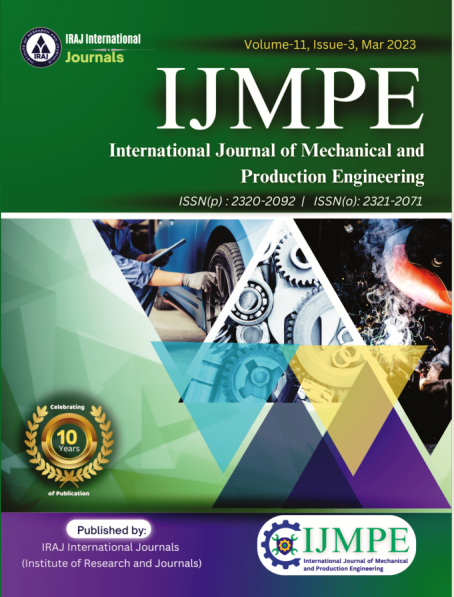Publish In |
International Journal of Mechanical and Production Engineering (IJMPE)-IJMPE |
 Journal Home Volume Issue |
||||||||
Issue |
Volume-8,Issue-2 ( Feb, 2020 ) | |||||||||
Paper Title |
Evaluation of Chromium (VI) Adsorption by Lignocellulosic Materials | |||||||||
Author Name |
Luísa Cruz-Lopes, Morgana Macena, Idalina Domingos, José Ferreira, Anabela Fragata, Bruno Esteves | |||||||||
Affilition |
1,2,3,4,6Center for the study of natural resources, environment and society (CERNAS), Polytechnic Institute of Viseu, Viseu, Portugal Center for Studies in Education and Innovation (CI&DEI), Polytechnic Institute of Viseu, Viseu, Portugal | |||||||||
Pages |
24-28 | |||||||||
Abstract |
The environmental contamination by heavy metals has been a subject of concern by the authorities and an important reason for the development of several studies in this field of research. The lead removal from aqueous solutions by adsorption in natural materials has shown promising results. Among the lignocellulosic materials tested in this study, walnut shell, chestnut shell, wood and burnt wood, it was possible to consider that a pH range of 4.9 to 6.5 showed the best removal indices for all the materials tested. The best removal rate ca. 64%, was found for chestnut shell, with a pH of 4.9. There was a trend to lower levels of Cr(VI) removal by increasing the solution pH in all materials. The kinetics of the adsorption process fitted a pseudo-second-order reaction with (R2= 0.987- 0.997) for all the samples but the walnutnut shell presents a kinetics of the adsorption process fitted a pseudo-first-order reaction with R2= 0.996 which indicated heterogeneity of the adsorbent surface and multilayer adsorption of Cr(VI). For all the samples, adsorption fitted well both the Langmuir and the Freundlich models but Langmuir presented higher R2= 0.994-0.998. The qmax values estimated by the Langmuir plotting were in the range 0.39-1.63 mg/g and the n values from Freundlich isotherms were between 1.56 and 16.05. Keywords - Hexavalent Chromium, Adsorption, Kinetics, Lignocellulosic Materials, pH, Walnut Shell, Chestnut Shell, Wood and Burnt Wood. | |||||||||
| View Paper | ||||||||||